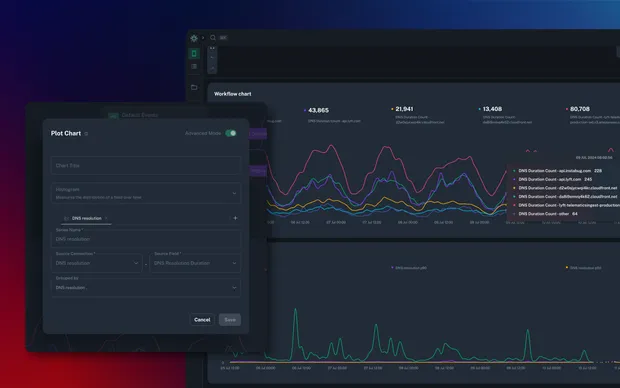Announcing advanced charting and histograms, oh my!
Today bitdrift Capture just got monumentally more powerful: you can now create sums and group bys via log field extraction, rates (like network success rate), and get this, fleet-wide accurate histograms of metrics like P90 request latency grouped by URL endpoint. These new charting types give mobile developers unprecedented visibility into their fleets, so you can build better, more resilient apps faster. Let’s dive in!

At bitdrift, we have a very different take on observability: on-device intelligence. Instead of sending loads of expensive telemetry data only to later sift through it for a few precious insights, we couple a sophisticated device SDK, local storage, and real-time control via our control plane SaaS, in order to dynamically fetch only the data that is needed in order to understand customer behavior and solve problems quickly. We give you 1000x the observability at 0.01x the cost.
Our existing charting over synthetic counter metrics feature allows answering the question: how many times does an interesting event happen (as represented by a log line in your app)? Effectively we only allow counting events, and rely on our matching system to determine which events to count. While very powerful on its own, there are many questions that can not be answered by this system. For example:
- Count the sum of a specific numeric field inside an event. For example, if a log line contains a field called
bytes_writtenwe might like to extract and show a sum of all bytes written across devices. - Display the rate of two different synthetic metrics. For example, showing success rate as defined by the number of successful requests divided by the total number of requests.
- Group a sum or rate via a group by label and then show the top groups. For example, showing the URL endpoints that send or receive the most data or the URL endpoints that have the largest failure rate.
- Displaying histograms (percentiles) of data such as request latency, disk usage, and other things that are not counters. Typically in this case we want to see accurate percentiles across P50, P90, and P99 to allow a deeper understanding of median and tail performance.